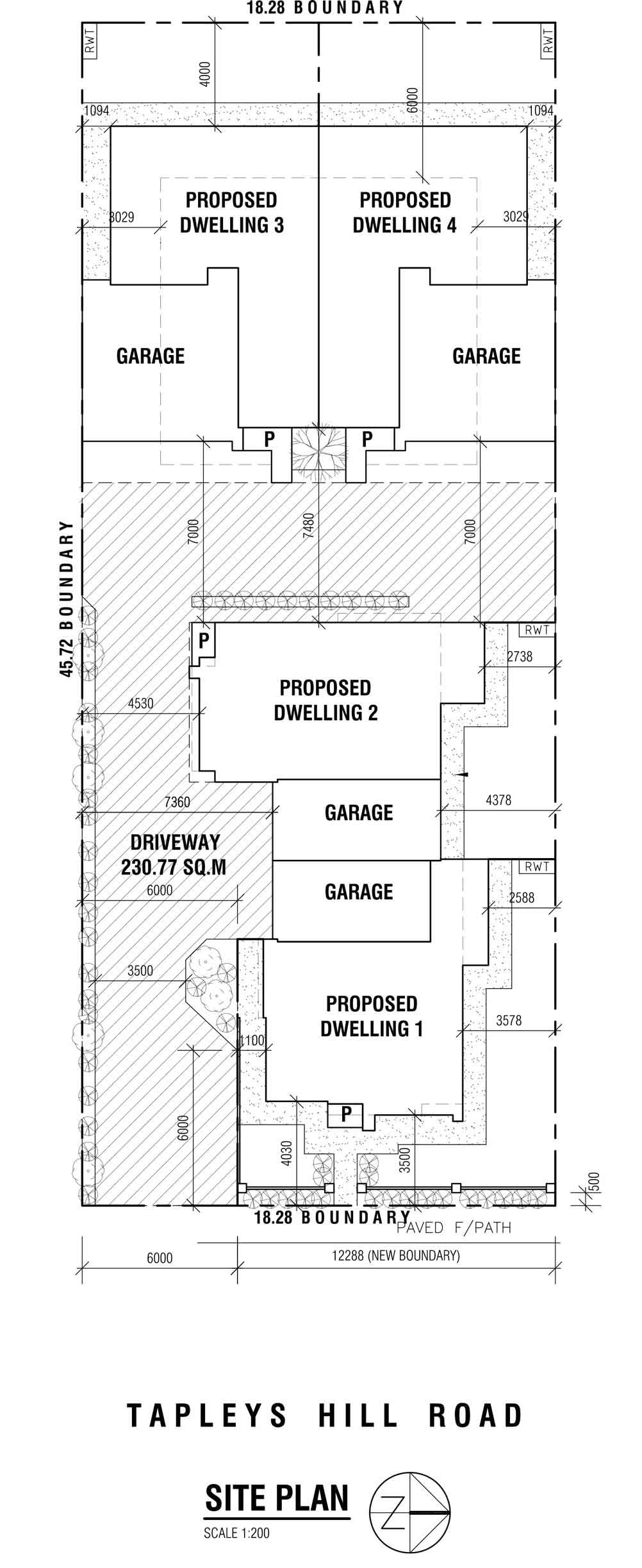Interested in property development? Here’s a helpful introduction to identifying key factors which can contribute to the delivery of profitable developments.
‘Setting the scene’: metropolitan Adelaide
With growing residential development activity across Adelaide, many have turned to infill development – encouraged by the State Government as a way of managing growth within the existing urban footprint. This type of development includes the demolition of an old home accommodated on a relatively large property, and the re-development and construction of several homes, resulting in an uplift in development yield.
This type of development has been included and encouraged within strategic documents that guide future development, and within Local Government Development Plans that provide localised guiding principles for envisaged forms of residential development. The overarching intention is for infill development to be delivered within localities, providing convenience and taking advantage of being close to the CBD, frequent public transport, employment, services, public reserves and education.
With public consultation relating to the statewide Planning Code recently concluded, the South Australian planning system is experiencing significant change. This is expected to be implemented across Adelaide in late 2020.

Case study: Glenelg North
Normus Urban Projects delivered this Glenelg North project from initial development, site identification, feasibility analysis, site acquisition, planning approvals through to turnkey construction and handover.
It comprised the demolition of an existing home and the re-development and construction of four homes.
The above infill development example provides an opportunity to highlight critical development phases which can influence project success.
Thorough preliminary investigations
After identifying a potential development site, it is fundamental to ensure that the proposed development is an envisaged form of development in the eyes of the relevant authority (more than likely a council). This involves:
- Reviewing relevant zoning and policy area guidelines within the Council Development Plan provides an indication of minimum quantitative requirements affecting the subject site – e.g. minimum site area, frontage width, setback dimensions, etc. This should also provide insight into whether a future development application would require public notification or determination by the Council Assessment Panel (rather than a delegated decision by the relevant Council Planning Officer, which removes some degree of uncertainty).
- Determining whether the proposed development can be accommodated on the subject site and comply, primarily, with minimum quantitative requirements. Note: it is not essential to comply with all minimum requirements, however, this can affect development applications and approval timeframes, as it may involve protracted negotiations.
Effective communication and collaboration with relevant council
- Early engagement with relevant council – before site acquisition.
It is essential that initial investigations have been undertaken prior to contacting Council, with an understanding of the preferred development type and envisaged forms of development. This will provide the best opportunity to engage in a meaningful discussion with the Planning Department regarding the potential development. It is highly likely that no assurances will be provided by Council pertaining to Planning Approval. However, this is a great way to gauge Council’s initial feedback and understand how this may affect the proposed development. As an example, the relevant council may provide valuable information based on recent experiences relating to assessing and granting approval for similar types of development. - Assuming all things go well and a decision has been made to acquire the site, it is then time to develop a concept plan which aligns with the project brief (e.g. maximum built area, single storey, two storey, two bedroom, three bedroom, four bedroom, double garage, study, two living areas, etc.) and has regard to preliminary feedback provided by the council. For example, Council may have indicated that the front setback dimension should be no less than a particular measurement.
- Presenting the concept plan to the relevant council Planning Department for preliminary feedback.
This provides an opportunity for the Council to review the proposed development, prior to the lodgement of the development application, and provide targeted and detailed feedback for consideration. It is essential that this feedback is fully understood to determine which components should be incorporated within the development. As an example, it could be determined that the development should fully comply with a number of feedback items. However, there may be a number of feedback items where it is appropriate to propose an alternative solution – a compromise. Furthermore, there may be some items which Council has requested that aren’t sufficient to warrant refusal of the development application. Therefore, it has been determined that these will not be incorporated within the proposed development. - Provide a development specific report, at the time of development application lodgement – supporting the proposed development and clearly demonstrating how it has considered the relevant zoning and policy area guidelines. Furthermore, include discussion which relates to the outcomes and consideration given to early engagement with council, and highlights how this feedback has influenced the proposed development.
- It is common for the relevant Planning Officer to make contact and request amendments or updates to the proposed development. Therefore, it is essential that the developer maintains a sense of belief in the development and deciphers whether Council’s requests are substantial enough to warrant refusal if not complied with. For example, on one of our projects the relevant council requested that one (of three) proposed homes incorporate a single width garage, rather than a double width garage. In this circumstance, we maintained our position by having genuine belief in the development, in addition to the provision of further justification. In the end, the relevant council was unable to refuse the application as all homes incorporated double-width garages. There are numerous similar examples, which illustrate the value of early engagement with Council and ascertaining which feedback items require compliance, compromise or justification for no change.
About author:
Spencer Hunt has a wealth of professional and hands-on experience as a town planner with nearly 10 years of professional work within the public and private sectors.
Spencer has worked at two South Australian councils as a Development Officer – Planning. Where he was responsible for the assessment of a range of development applications. This professional experience, coupled with Spencer’s understanding of the South Australian development legislation, Council Development Plans and knowledge of working across sectors, are key factors that have led to his appointment at Normus.
The role of Acquisitions and Development Manager involves undertaking detailed property research, engaging with key stakeholders – including, but not limited to; real estate agents, architects and Local & State Government Departments – to understand the development potential of properties.
About Normus Urban Projects:
Normus Urban Projects is a proud South Australian, multiple award-winning, commercially-based construction company providing exceptional value and expertise since 1991. We deliver the highest quality turnkey homes on time and to budget, by undertaking the full suite of development and construction services.
Normus Urban Projects provides comprehensive service to developments throughout the project lifecycle – from concept to completion.
- Designing and constructing high-quality developments of varying scale.
- Researching the locality and developing homes to meet local demography and market conditions.
- Understanding specific site opportunities and effectively managing constraints.
- Liaising with councils at early stages to streamline development approvals.
- Designing unique architectural homes that are well positioned with nearby amenities.
* This blog is general in nature. Advice, based on individual and personal circumstances, should be sought prior to undertaking development.



